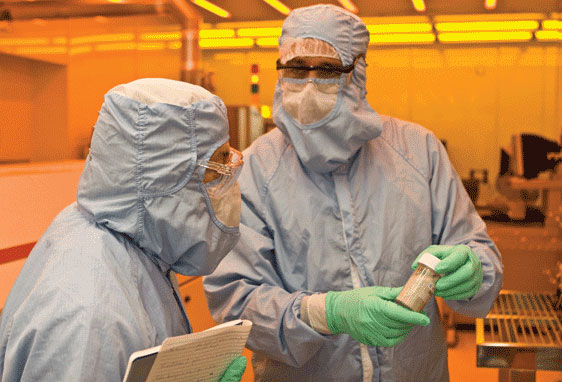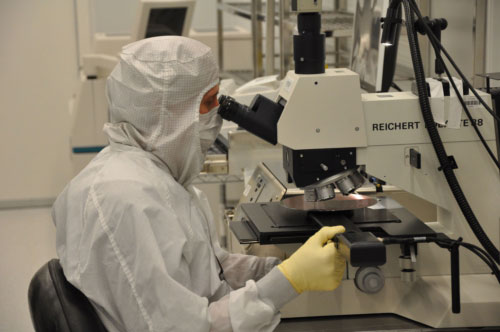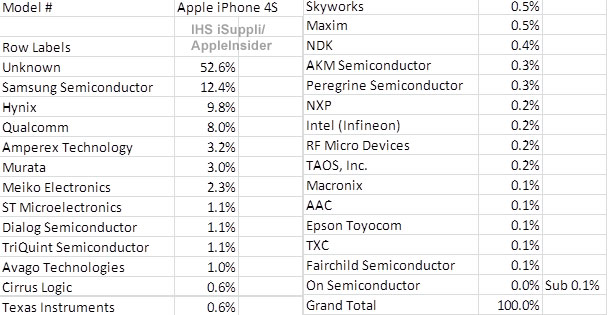Several months ago, a group of Americans committed to reviving manufacturing in this country, and having expertise in a wide range of areas relevant to that goal, met for a day-long meeting, The Second Annual Conference on the Renaissance of American Manufacturing: Jobs, Trade and the Presidential Election, in Washington, D.C. The Conference focused on what needs to be done to revive U.S. manufacturing and why this objective must be a central issue in the 2012 Presidential Election. Speakers ranged from Gene Sperling, Assistant to President Obama for Economic Policy, to Grant Aldonas, former Undersecretary of Commerce for International Trade under George W. Bush, speaking for the Romney Campaign. Corporate and labor leaders included Gordon Brinser, President of SolarWorld; Brian Toohey, President of the Semiconductor Industry Association; and Thea Lee, Deputy Chief at Staff at the AFL-CIO. Policy gurus included writer Clyde Prestowitz, Rob Atkinson, President of the Information Technology and Innovation Foundation, Ralph Gomery, former Senior Vice President at IBM, Leo Hindery from the New America Foundation, and Alan Tonelson of the United States Business and Industry Council. Present and former elected officials included Senators Rob Portman (R-OH), Jeff Merkley (D-OR), and Jeff Sessions (R-AL), and former Governor of Maryland, Bob Ehrlich.
Such a diverse group of participants has no one solution for reviving manufacturing in the United States. But a number of key ideas emerged, which are described below. These need to be followed-up on immediately by policy makers, and by candidates at the Presidential, Congressional, and State levels.
Two-Part Strategy: As a matter of process, we need to embrace a two-part strategy: (1) specifying what we need to enhance based on that we are already doing (i.e., trade enforcement, R&D tax benefits) and (2) taking on major new strategic elements (e.g., trade action against currency undervaluation, creation of a Secretary of Manufacturing, a large Economic Development fund at the Federal level).
Capitalizing on Recent Growth Areas: We need to take advantage of events that are already occurring, capitalizing on three areas of robust economic development in the United States: the communications boom, the tremendous increase in natural gas production, and the health care boom. We should think of health care in Buy American terms-in other words we should buy from domestic manufacturers–given the heavy subsidies from the U.S. Government to this industry.
Off-Shoring Policy: Many participants believe there should be a governmental and economic review of the implications of off-shoring by companies in the most sophisticated segments of the manufacturing base (such as electronics and avionics). Off-shoring of technologies in these areas is particularly problematic.
Eliminating the Trade Deficit: There is a strong belief that the trade deficit contributes to the budget deficit and we need to take steps to eliminate it — in other words “Trade Deficits Matter.” We also need better scoring on trade agreements. We should only approve trade agreements that demonstrate a “plus jobs, plus factories effect.”
Addressing the SOE Problem: State-Owned Enterprises (SOEs) in China and elsewhere have become a major challenge for U.S. manufacturing. Many U.S. manufacturers are now competing against arms of the state to a much wider degree than in the past, yet our trade system is still geared toward dealing with market-oriented companies who have market-oriented motivations. We need a broader set of remedies and review mechanisms related to SOE investments and imports into the United States and their unfair practices abroad. One proposal is to create a CFIUS-like system for review of investment and sales by SOEs in the U.S. market. CFIUS, the Committee on Foreign Investment in the United States, is a governmental inter-agency committee with jurisdiction to review foreign investments in U.S. companies, and stop such investments if they pose a threat to national security. A similar program could relate to SOEs, trade, and economic security.
A Comprehensive China Policy: A central issue remains trade with China, where we had a $295 billion trade deficit last year. Almost all of it in manufactured goods. With regards to China, our Conference panelists strongly urge the passage of legislation to offset currency manipulation. We also want a standstill in any further trade benefits for China, including negotiation of an investment treaty, until the Chinese government changes its indigenous innovation program, a program which undercuts U.S. high-tech companies in their efforts to access and prosper in China. We also believe we need a broad-scale effort to combat Chinese subsidies and a more vigorous program to combat Chinese theft of U.S. intellectual property, which would include serious consequences for Chinese companies that engage in such behavior. Finally, coerced transfer of IP and even of company ownership has become a prerequisite to doing business in China and cannot be tolerated.
Incentivizing Reshoring: We support reshoring initiatives that have recently demonstrated that it does make sense to bring manufacturing plants and jobs back to the United States now. The Boston Consulting Group and the Reshoring Initiative have done important work in this area.
Structural Changes in Government: We think some structural changes are needed in the U.S. Government, including the creation of a Secretary of Manufacturing, who should be in a position to make sure sound manufacturing policies are developed and implemented throughout the Federal Government. We believe there should be an attempt to replicate the German Fraunhofer Institute system, which is a government-funded applied research organization that disseminates R&D and has successfully assisted the German manufacturing sector for many years, much of it through direct contracts with industry.
Revision of Tax Policy: It is a national scandal that we have allowed a gross tax disadvantage for U.S. exporters to go on for decades, due to a peculiarity in the WTO system. When U.S. companies export their products, they cannot obtain a rebate of their income taxes and thus their
expor
t prices must be higher, but foreign countries, which have a VAT (value added tax), are permitted to rebate the VAT on export under the WTO system. This gives many foreign exporters a 17 percent advantage over U.S. companies. No wonder our manufacturers are suffering! We also need to lower the corporate tax rate — we now have the highest corporate tax rate in the world.
Regulatory Reform and R&D Promotion: It is critical to remember that we do not operate in a vacuum; we are in an international competition for manufacturing market share. Other countries engage in competitive efforts to attract manufacturing, whether it consists of our own, or their own, companies. To that end, and to make the United States fully competitive in this worldwide struggle, we need to lower the regulatory burdens on U.S. businesses and manufacturers, create an Economic Development Fund to match foreign support for manufacturing, increase funding for R&D and innovation in the United States, and provide larger and more dependable tax benefits for R&D and innovation. The R&D tax benefits should be tied to having the subsequent manufacturing take place within the United States. We recognize that when it comes to taxes and general business regulation, other competing demands arise within the U.S. political and economic system. Those of us in favor of a stronger manufacturing base cannot solve all of these conflicts, but we do believe the current status quo is creating disincentives for making things in America.
Enhancing Buy America Provisions: We think more can and should be done with Buy America requirements. These have been worn away to the point that they seldom operate in the way originally intended by the Congress. As infrastructure spending increases, as we believe it should, federal and state government purchases should be made from suppliers in the United States. Insofar as our international agreements prevent this preference, we need to review the operation of these agreements to see if they are benefiting U.S. exporters in foreign government procurements to any significant degree. The International Trade Commission or the Government Accountability Office should conduct a study of this issue. The regulations underlying the Buy America program must be critically examined and probably rewritten — waivers should be curtailed and the new regulations should specify that we need a very high level of U.S. content before a product can be considered to be “Made in America.”
Re-Tooling the Work Force: Finally, there are more and more instances where we do not have the right people available at the right time to fill manufacturing jobs. This does not mean it’s all a question of training, as some would say. It is certainly not because of a “lack of training” that we have
lost five million manufacturing jobs over the last decade. But it does appear there is a mismatch between some existing skill sets and the newest demands on manufacturing workers. To that end we should redouble our investments in community colleges and other training programs that can prepare the next generation of workers for a manufacturing career. And we need to fully support the great engineering schools of the United States, and provide funding for any student who wants to undertake this critical and challenging career.
There is no one solution that will solve the problem of a declining U.S. manufacturing base, but there are solutions. We need to have a national commitment to manufacturing, which was one of the main focuses of the Conference on the Renaissance of American Manufacturing. And we need to be prepared to revise our strategy on a real time basis. We cannot build a Maginot Line. We need to build the next space program.























